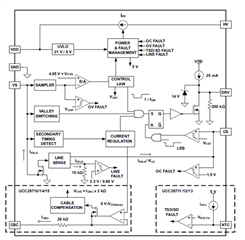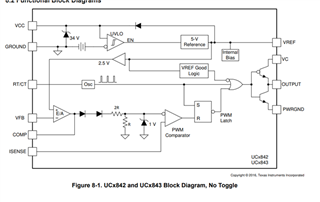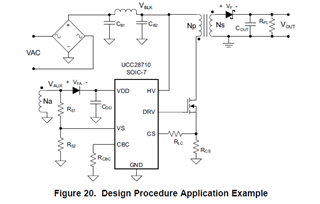Other Parts Discussed in Thread: UC3844, UCC28C44
1. In the case of UCC28711, the DRV pin is indicated as a current source. Additionally, the maximum voltage is limited to 14V (generated by the diode)
2. In contrast, for other ICs, voltage is applied (see diagram below).
3. For the UCC28711, if the output of the drive pin is set as a current source (maximum 0.035A), how is the VGS voltage applied to the Mosfet adjusted? Is the maximum VGS determined by the Qg characteristic of the Mosfet?
4. The gate resistor is a component that adjusts the turn-on/off time. When supplied as a current source, how is this adjusted?

<UCC28711>

<UC3844>



